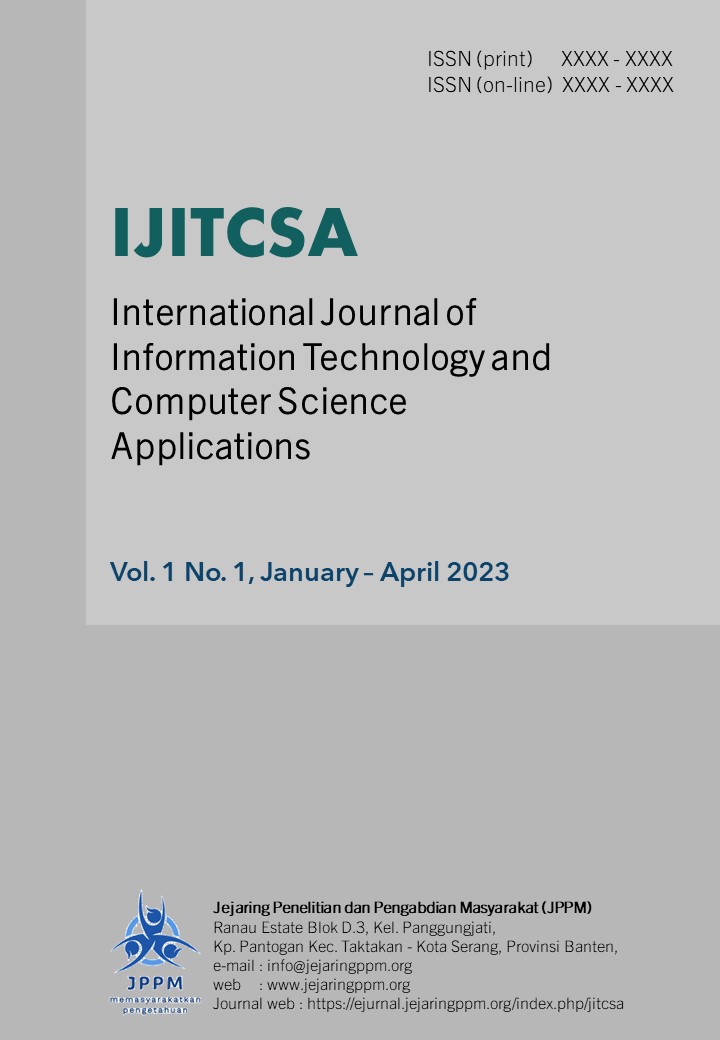Discovering Patterns in Textual Data Using SAS Visual Analytic
DOI:
https://doi.org/10.58776/ijitcsa.v1i1.18Keywords:
Text analysis, sentiment analysis, negative, product deliveryAbstract
Today's generation are more tech savvy than previous generations. They tend to complete their everyday tasks from making their daily schedule to purchasing their daily necessities on the internet. Due to the boom in this culture, e-commerce retail stores have increased their retail sales. According to the United States of America’s Census Bureau, the retail online sales in the year 2012 has peaked at $45.6 billion from the year 2001. This is an increase of 26.9%. This proves that the digital economy is growing and will continue to grow further. In e-commerce platforms there will definitely be a large requirement for logistics which develop a cross organisational support between supply chain management and retail sales. Using text analysis an in depth review of understanding customer satisfaction towards logistical issues to further enhance product delivery and logistical improvements in terms of logistics operations. Mainly using sentiment analysis. Challenges to product delivery are discussed and viable solutions to overcome current or existing logistical issues are presented in this paper.
References
C. Gallagher, E. Furey, and K. Curran, “The application of sentiment analysis and text analytics to customer experience reviews to understand what customers are really saying,” International Journal of Data Warehousing and Mining, vol. 15, no. 4, pp. 21–47, 2019.
X. P. Qiu, T. X. Sun, Y. G. Xu, Y. F. Shao, N. Dai, and X. J. Huang, “Pre-trained models for Natural Language Processing: A Survey,” Science China Technological Sciences, vol. 63, no. 10, pp. 1872–1897, 2020.
A. Yadav and D. K. Vishwakarma, “Sentiment analysis using Deep Learning Architectures: A Review,” Artificial Intelligence Review, vol. 53, no. 6, pp. 4335–4385, 2019.
B. Ramkumar and H. Woo, “Modeling consumers’ intention to use fashion and beauty subscription-based online services (SOS),” Fashion and Textiles, vol. 5, no. 1, 2018.
F. M. Moy and Y. H. Ng, “Perception towards e-learning and covid-19 on the mental health status of university students in Malaysia,” Science Progress, vol. 104, no. 3, p. 003685042110298, 2021.
L. Zhang, “Platformizing family production: The contradictions of rural digital labor in China,” The Economic and Labour Relations Review, vol. 32, no. 3, pp. 341–359, 2021.
A. Biswas, D. Jaiswal, and R. Kant, “Investigating Service Innovation, Bank Reputation and Customer Trust: Evidence from Indian Retail Banking,” International Journal of Quality and Service Sciences, vol. 14, no. 1, pp. 1–17, 2021.
K. Li, D. J. Kim, K. R. Lang, R. J. Kauffman, and M. Naldi, “How should we understand the digital economy in Asia? critical assessment and research agenda,” Electronic Commerce Research and Applications, vol. 44, p. 101004, 2020.
J. Hultman and U. Elg, “Developing CSR in retail–supplier relationships: A stakeholder interaction approach,” The International Review of Retail, Distribution and Consumer Research, vol. 28, no. 4, pp. 339–359, 2018.
R. H. Hariri, E. M. Fredericks, and K. M. Bowers, “Uncertainty in big data analytics: Survey, opportunities, and challenges,” Journal of Big Data, vol. 6, no. 1, 2019.
J. Lv, Z. Wang, Y. Huang, T. Wang, and Y. Wang, “How can e-commerce businesses implement discount strategies through social media?,” Sustainability, vol. 12, no. 18, p. 7459, 2020.
N. Benkerroum, “Retrospective and prospective look at aflatoxin research and development from a practical standpoint,” International Journal of Environmental Research and Public Health, vol. 16, no. 19, p. 3633, 2019.
J. Kang, “Mobile payment in fintech environment: Trends, security challenges, and services,” Human-centric Computing and Information Sciences, vol. 8, no. 1, 2018.
C. Jiang, R. M. Rashid, and J. Wang, “Investigating the role of social presence dimensions and information support on consumers’ trust and shopping intentions,” Journal of Retailing and Consumer Services, vol. 51, pp. 263–270, 2019.
Downloads
Published
How to Cite
Issue
Section
License
Copyright (c) 2023 Wintuik Majaliwa

This work is licensed under a Creative Commons Attribution-NonCommercial-ShareAlike 4.0 International License.
Attribution 4.0 International
You are free to:
- Share — copy and redistribute the material in any medium or format for any purpose, even commercially.
- Adapt — remix, transform, and build upon the material for any purpose, even commercially.
- The licensor cannot revoke these freedoms as long as you follow the license terms.
Under the following terms:
- Attribution — You must give appropriate credit , provide a link to the license, and indicate if changes were made . You may do so in any reasonable manner, but not in any way that suggests the licensor endorses you or your use.
- No additional restrictions — You may not apply legal terms or technological measures that legally restrict others from doing anything the license permits.
Notices:
You do not have to comply with the license for elements of the material in the public domain or where your use is permitted by an applicable exception or limitation .
No warranties are given. The license may not give you all of the permissions necessary for your intended use. For example, other rights such as publicity, privacy, or moral rights may limit how you use the material.





